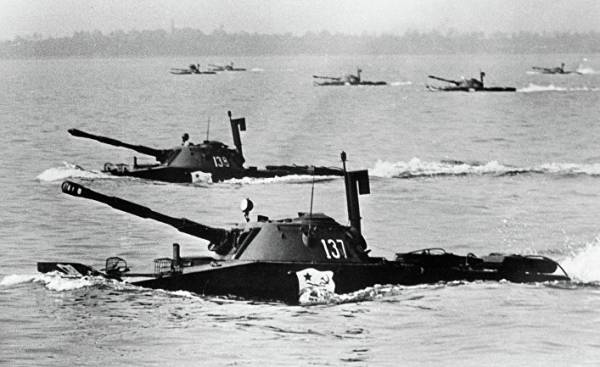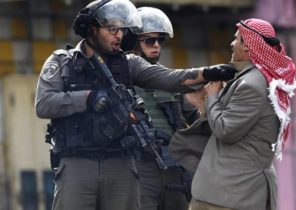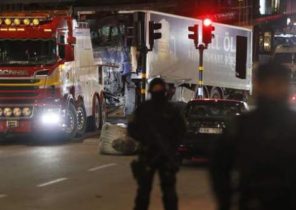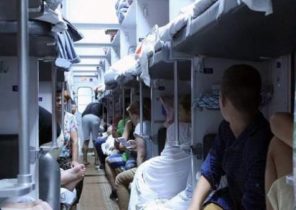
The Soviet PT-76 it may seem a kind of oddity of the cold war, being easy floating tank with thin armor and a weak gun. It seemed that he was hard to get on the modern battlefield, where there are heavy weapons and powerful tanks.
But floating PT-76 has established an amazing record. He led into battle armed with knives soldiers in the Himalayas, drowned the artillery of the boats in the Ganges Delta, have engaged in combat duel with a powerful American tanks Patton in Vietnam and participated in a sudden airborne attack on both sides of the same middle East war.
This article consists of two parts, first we will talk about the history and characteristics of PT-76 of the terrible shock at what this tank was for the us troops in Vietnam, and also about the historical ways of fighting with this machine.
On the eve of the Second world war in the Soviet Union he created a series of light amphibious tanks, composed of T-37, T-38 and T-40. However, these lightly armored machine with a two-man crew and armament of one machine gun could not compete with German tanks invaded the Soviet Union in 1941. For the first six months of the war most of these tanks were destroyed and they were replaced by the heavier machine.
However, the Soviet military returned to his plan after the Second world war. In 1949, adopted a resolution on the production of a prototype of the Object 740, the constructor of which was Nikolai Shashmurin, who worked at the Kirov plant in Leningrad.
For tank movement by water Shashmurin used two innovative water jets placed on the sides. The crew of three was enough to lower videotraining the plate and turn on the bilge pumps, then the tank could move along the river or on the sea with a speed of 10 kilometers per hour using to rotate the wheels at a water-jet propellers. If necessary, the tank could sail a few hours and even keep afloat the firing of the main gun.
This machine weight of 14.6 ton has a good cross on dry land thanks to candlestick Christie suspension and hydraulic shock absorbers. However, the PT-76 is hardly moving and nimble, as the maximum speed he has 43 kilometers per hour.
The body of the tank made of rolled steel is unusually large and has thin armor, which gives it buoyancy. The thickness of the armor on the tower does not exceed 25 millimeters, and a tilt housing it is twice thinner. This is enough to protect the crew from machine-gun bullets, but not from 12.7-mm machine gun, or fragments of heavy artillery shells.
Production of the tank started in 1951. The name of the PT-76 (amphibious tank) have got powered in the tower rifled gun D-56 caliber 76 mm. The caliber and barrel length it was the same as for the gun f-34, which was mounted on the T-34 during world war II. But D-56 was more powerful ammunition.
Ammunition of the tank consisted of 40 rounds — high-explosive and armor-piercing that pierced the armor thickness of 100-127 mm. Later tanks PT-76 received cumulative ammunition, BK-350M pierces 200-280 mm armor. These shells have become a serious threat to tanks of the era, although they range was small.
Paired with a gun tower machine gun of 7.62 mm was a subsidiary weapon. Even on the turret of a PT-76 was mounted heavy 12.7 mm DShK. In the same large scale on the basis of this tank was manufactured BTR-50.
Various sources claim that by 1968 the Soviet Union had built from four thousand to 12 thousand PT-76. Its chassis became the basis for many other armored combat vehicles, such as airborne self-propelled gun ASU-85, antiaircraft self-propelled installation ZSU-23-4 anti-aircraft missile complex “Cube”.
But T-76 there were a few drawbacks. Non-stabilized main gun demonstrated low accuracy on the move, the crew had no protection from nuclear, chemical and biological weapons, and night vision device had only the driver. In 1959 he developed a version of the tank PT-76B, where we took into account all the shortcomings, except the last one. The tank appeared gun D-56ТМ with stabilization in two planes, modernized building, the new additional fuel tanks and uprated engines IN-6M.
The Soviet PT-76 entered service in the marine corps, as well as in the reconnaissance units of regimental and divisional level. From one thousand to two thousand tanks were delivered for export in 25 + countries. China made their own version — tank Type 63. He produced 1 500 such tanks. But the Type 63 was not an exact copy of the Soviet T-76 because it used the engine of Chinese production and a more powerful gun caliber of 85 mm.
Vietnamese tanks Ghost
The entire first half of the Vietnam war North Vietnam has created its own modest tank fleet, but the battle was not introduced. But during the Tet offensive in 1968, he finally used his “iron machine” when the army of North Vietnam supported the Viet Cong guerrillas during a powerful attack on major cities and military bases throughout South Vietnam.
Hanoi supplied the Viet Cong via the Ho Chi Minh trail, which passed through the territory of Laos. To monitor the movements of this path, the Lao government sent 700 troops from the battalion BV-33, which is located in the Fort in the city Huisi. This stronghold also protected the more than two thousand refugees.
January 23, 1968, a week before the Tet offensive, the 24th regiment of the North Vietnamese army attacked the camp at night, backed by tanks PT-76 from the composition of the 198th tank battalion. These tanks were a distance of 1 300 kilometers on the Ho Chi Minh trail, and then joined the battle. It was the first tank battle North Vietnamese army.
He was not very smooth. PT-76 several times stuck in the swamps, which the infantry are not accustomed to fight along with tanks, had first to engage in battle with the Lao battalion. But when the fight got into the PT-76, the Lao military retreated in disarray.
North Vietnamese troops seized the Fort for three hours until the arrival of the Laotian reinforcements, and the surviving soldiers and the refugees went to the East, eventually finding refuge in South Vietnam on the basis of special forces in Languae.
But that was only the beginning of their misadventures. Two weeks later at midnight on 7 February, a battalion of North Vietnamese army with support from 11-13 tanks PT-76 from the composition of the 198th tank battalion attacked Langua. Long perimeter of the base was defended by 500 civilian militias and the Montagnards (one of the ethnic groups of Vietnam). They were supported by 350 surviving Laotian fighters and 24 of the American special forces under the command of captain Frank Willoughby (Frank Willoughby).
Intelligence warned about the presence of tanks from the North Vietnamese troops operating in the area, but the tank attack was still a real shock for Americans. However, people in the camp recoilless rifles M40 106 mm caliber managed to knock out three light armored cars. One of them was a female crew. But it did not repel the North Vietnamese tank crews who destroyed fences, barbed wire and went through the passages in the minefields, paving the way for the infantry.
Destroyed coming from a 76-millimeter guns recoilless rifles, and then began one after another to destroy fortified bunkers.
Us commandos started with the short range fire of the 66-mm M72 disposable rocket launchers. His rockets had easily penetrate the weak armor of the PT-76, but they gave one misfire after another. Special forces often miss, and when it fell, no effect it gave. One calculation I hit the tank with nine shells, but to no avail.
Another group of hunters for tanks managed to set fire to the PT-76, once in his back. It was the fourth and last tank, knocked out in that fight.
To the morning light tanks already rolled into the center of the camp, firing guns and machine guns, and surrounding the American troops, who had taken refuge in a command bunker.
No shelling, no air strikes, no counterattack by the Lao troops, headed by two officers of U.S. special forces to knock out the advancing Vietnamese troops failed. The nearest marine base in Chechani had to support camp Langway in extraordinary circumstances, but the command refused to send reinforcements, as itself came under siege.
The surviving South Vietnamese, American and Laotian soldiers fled Langua the next day, when the camp fell. They left 300 dead.
The army of North Vietnam very effectively used their PT-76 against the troops who did not have anti-tank weapons. But soon the North Vietnamese tanks met strong resistance from the American tanks M48 Patton, which weighed three times more, had a 90 mm gun and turret armor thickness of 175 mm.
The first fight of the two machines was very unusual. Three months after the fall Langway reconnaissance plane spotted the crew of PT-76 who was cleaning his tank in the river Benji. The pilot reported the coordinates of the tank to the 3rd armored battalion of the marine corps, which was stationed on the base Kondian. The tankmen lifted the barrels of their guns high in the sky and began to fire from concealed firing positions.
Tanks Patton in Vietnam often carried out tasks of artillery, but the tank in this way was firing on another tank — it happened very rarely. The third high-explosive shells hit the tank, and the crew was forced to leave the car, which was later finished off the F-4 Phantom.
A year later, on 3 March 1969 tanks PT-76 the North Vietnamese army went to the forefront of the offensive night of the 66th regiment to the position of U.S. special forces at Ben-Het, where the battery is powerful self-propelled guns М107 caliber 175 mm.
A platoon of three “Patton” of the company In the 1st battalion of the 69th armored regiment was guarding the perimeter, sheltered positions behind the sandbags. In addition, there were two anti-aircraft M48 Duster. Hearing the sound of approaching enemy tanks, head Patton had turned on his powerful spotlight.
Suddenly, one of the four advancing PT-76 were wounded by landmines, and fire blast has highlighted the silhouettes of the other cars. The silence of the night broke the rumble of gunfire, the Americans and the Vietnamese opened fire armor-piercing shells. One Patton knocked out the PT-76 on the second shot.
Meanwhile, the company commander captain John Stovall (Stovall, John) sat on the turret of a command tank, illuminated by a beam xenon searchlight. At this moment the car hit 76-mm shells, dropped from the tower Stovall and the tank commander, and killed two crew members. They were quickly replaced from the reserve tank, and the tank is again opened fire.
The American base has requested support for the 81-mm mortars, and attack aircraft AC-47 and tanks used up anti-tank ammunition and switched to high-explosive. Finally, arrived the second platoon of “Patton”, forcing the North Vietnamese military to retreat. The next morning the Americans found near the perimeter of the camp two wrecked PT-76 and one BTR-50PCS. It was the only battle between American and North Vietnamese tanks during the Vietnam war.
Three years later, in June 1972, in the Ben het the NVA again were the floating tanks. But this time they suffered a terrible and historical revenge on the part of Americans.
A month before Vietnam came to the test group of helicopters UH-1B with new anti-tank missiles BGM-71 TOW. They were sent to help the camp, and the helicopter pilots with their missiles with control by wire destroyed three PT-76 of the launchers XM26. The rest of the tanks withdrew.
Hunting for tanks helicopters UH-1 “Iroquois” in a week knocked out five PT-76 in the vicinity of the Manda. The first version of TOW missiles pierced the armor thickness of 430 millimeters, and therefore 25 millimeters of steel on the front of the tower FRI-76 did not protect the crew.
Thus, the PT-76 has earned the dubious reputation as one of the first tanks destroyed by anti-tank missiles from the helicopter. However, I can say that it was a shooting from a gun on sparrows.
When the Americans left Vietnam, the North Vietnamese tanks were more likely to use heavier T-54, Type 59 and captured by the Americans light tanks M41 Bulldog. They actively used them together with the PT-76 in various battles, including for the cities of loc Ninh and An loc in 1972. These tanks spearheaded the offensive in 1975 that led to the fall of Saigon.
Vietnamese army to this day are in service with hundreds of modernized tanks PT-76 and Type 63 Chinese production.







